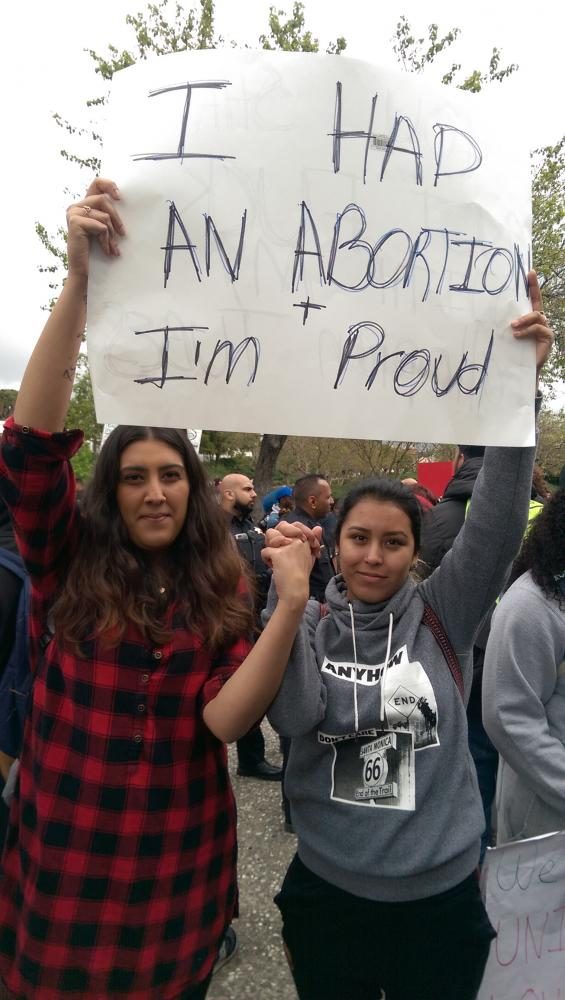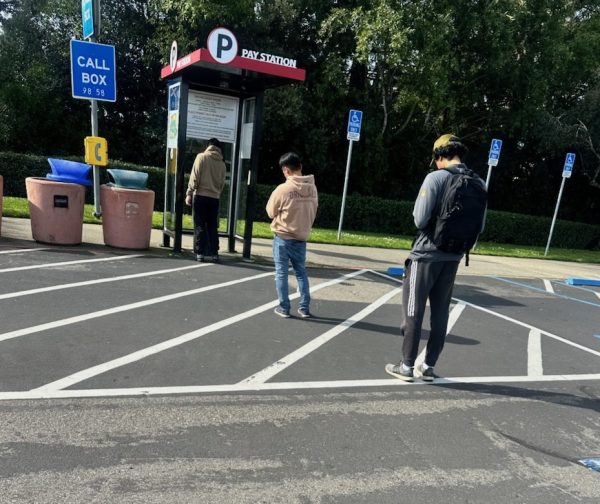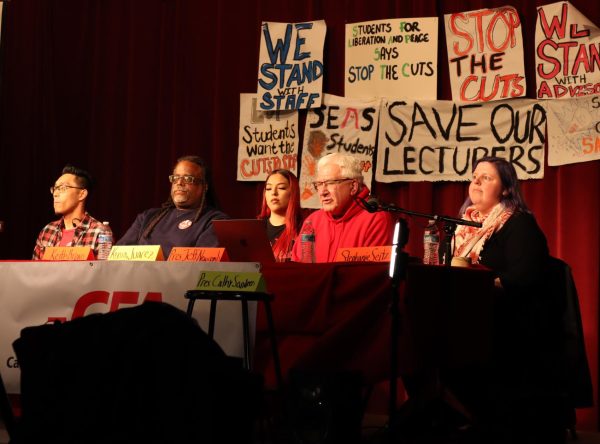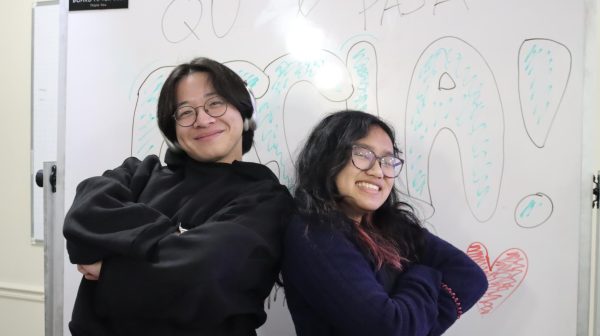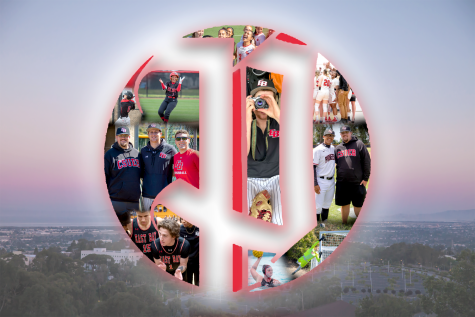Campus sees rising tension in 2017
A group of four people, wearing black jackets covered in white and yellow phrases like “Fear God” on the back once again visited Cal State East Bay’s Hayward campus on April 24. Members of the group shouted to passersby about how a lack of temperance in regard to instant gratification would lead students to Hell.
Around noon they stood on a picnic table in front of the Provisions on Demand (POD) Market on campus holding signs with pictures of aborted fetuses and a list of indulgences that would send students to hell, such as premarital sex and smoking marijuana. Groups like these visit the campus regularly, but do not outwardly identify with one particular group or organization.
As I listened to those four people shout their beliefs at a group of students that day, I was reminded of my religious upbringing — I went to private catholic school from kindergarten through high school in San Francisco — and how I came to believe what I do.
Uniforms were a requirement at my schools, and so were religion classes. I engaged in Christian sacraments like Baptism and Communion and partook in Passover with the rest of my school. In high school we attended mass at least bi-weekly and participated in morning and afternoon prayers. Religion classes were a requirement, but it wasn’t frowned upon to question or disagree with what was being taught and when I did ask questions, I was not given biased answers.
When I attended church I couldn’t help but feel robotic waiting for the priest to say a specific line so I could give my pre-determined response. It didn’t feel genuine to me. After thirteen years of Catholic school I learned that religion simply wasn’t for me, and began searching for a higher power that worked for me.
As a fifth-year CSU East Bay student, I now identify as agnostic simply because I haven’t fully figured out how else to identify when it comes to religion. I don’t know if I believe in a God, but I do know that that idea of God is not my higher power. But having been raised in Christian schools and being taught Christian morals, I didn’t like what I was heard from those speakers on campus that day. The teachings I received from religion classes included teaching its ways, not forcing them on people. Their approach was too aggressive in addition to their hateful message.
Roughly fifty East Bay students surrounded the speakers, who were being protected by a wall of University Police Department officers. One officer had to escort a student away for spitting on a speaker, but no arrests were made.
When these speakers come to the East Bay campus many students inevitably voice loud opposition to their hardline religious rhetoric. Their messages may be offensive but at the very least they get students thinking about these controversial topics rather than ignore them.
This was just one small instance of people exercising religious freedom and free speech in a public space, but the foul attitude that hateful message put me in could be felt by everyone on our campus that day, and is indicative of what is going on at a national level. Does “free speech” extend to “hate speech?” Are all religions currently welcome in this country?
As a nation, it’s not clear exactly where we stand on religion. President Donald Trump is a divorcee, has as many as sixteen “alleged” sexual harassment charges against him, according to the Huffington Post and yet the Christian Right embraced him in his campaign to become president. Can we say all religions are welcome in The United States when President Trump signed legislation in late January 2017 banning people from seven predominantly Muslim countries from coming to the U.S. only three months into office?
With further attempts to build a wall along the border of Mexico and have the Mexican Government pay for it, I’d say no.
Likewise, it’s not quite clear where, as a country, we stand on free speech. A recent free speech protest on March 4 and a pro-Trump rally on April 15, both in Berkeley, ended in violence that resulted in 10 arrests in March and 20 in April, according to CBS SF Bay Area.
Cal State East Bay is also struggling with its own religious and free speech identity crisis. Although East Bay is a very diverse campus — it was awarded the Higher Education Excellence in Diversity Award for racial diversity in 2014 — events like the one that occurred on Monday reminded me that the tension is still present.
Five years after graduating high school, I now acknowledge nature as my religion, and science as my scripture, which is becoming increasingly important as the Trump administration attacks facts and science-based organizations like the EPA, NASA, and ARPA-E, a company focusing on clean energy, by cutting funding and removing information from the EPA website.
As the speakers pointed at students and told them “you’re going to hell,” many students responded by making impromptu signs with any marker or sharpie they had on hand. One student quoted “Hamilton” actor Lin-Manuel Miranda’s 2016 Tony Award acceptance speech with a sign that said, “Love is love is love is love, cannot be killed or swept aside.”
Although the message those speakers had was over the top and offensive to many of those who were listening, I feel those people should be allowed to voice their opinions and spread their beliefs.
Freedom of speech should not include hate speech.
Observing hate speech on campus that day, I saw a student rally others away from those speaking. It reminded me that the only way to refute the opinions of someone who won’t listen to reason is not to prevent them from speaking, but rather to refuse to listen, if rational refuting isn’t possible.
When faced with an opinion we disagree with our first response shouldn’t be to call the person a bigot, racist or idiot, but to sit down with them and engage them in conversation. Find out why they think they way they do and convince them otherwise!
Conversation needs to be a two-way street and what happened on campus Monday was tense with two sides shouting at each other, but not listening.


